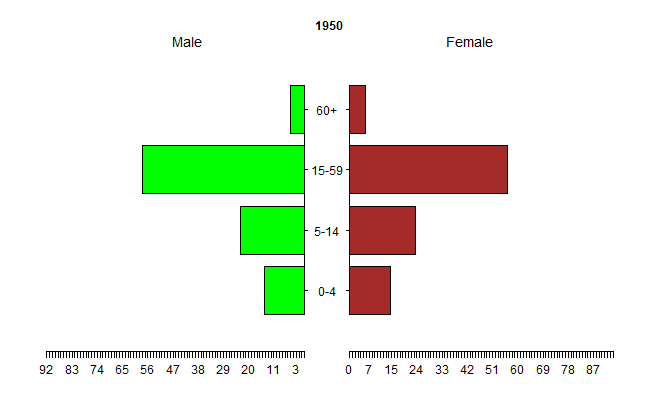Old age is characterised by loss of productive capacity and hence lesser or no ways to generate income. With age, health deteriorates, causing health expense to rise. Communities around the world have had traditional and informal mechanisms to manage longevity risk in the face of a loss of income upon retirement. The existence of social stigma, unfavourable property laws and uneven employment opportunities poses more concern for elderly women, especially widows[1]. Some research suggests that this has included having more children as an old age security mechanism (De Vos, 1985)[2], or depending on extended family networks to assure old age security. With increasing urbanisation[3] and atomisation of the family unit[4], these informal mechanisms tend to lose effectiveness. It is, therefore, no surprise that governments have been actively involved in the transition to more formal mechanisms for old age income security as part of their social security frameworks. In India, old age income security is a subject of immediate concern for policymakers due to multiple factors like increased longevity, decreasing fertility rates, and a large informal labour force outside the purview of social security nets[5]. By 2050, every fifth Indian will be a sexagenarian compared with one in twelve now[6]. In the figure below, we can see that the country is rapidly ageing and progressing towards a higher old-age dependency ratio. India is expected to have 12.4% of its population above the age of 60 in 2026 as compared to 9.3% in 2016[7]. This means that while the productive capacity of the country decreases, it’s consumption needs will either remain the same or even increase.
Projected Population Growth of India 1950-2100

% share of population as the x-axis for the gif
The state of old age income security poses a significant threat to the long-term economic growth of the country. Yet, the pensions systems in India lag significantly when it comes to protecting against old-age risks. In terms of coverage, internationally, 68% of people above the retirement age receive pensions. Social pensions (or tax-financed pensions) roughly leaves at least a third of the intended beneficiaries excluded[8]. Amongst those who do get pensions, the amounts received are inadequate to manage even basic living expenses. The pension amounts do not even cover half the per capita consumption expenditure specified by the State poverty line, much less the household consumption expenditure. Only 7.4% of the Indian labour force is participating in any contributory pension scheme[9]. The pension amounts they get are not even 10% of their average earnings. According to Mercer’s Index, a minimum pension of at least 30% of average earnings is required only to meet the poverty alleviation goal[10]. Public spending on social security for the retired is only 0.2%. This is much lesser than what all the other BRICS countries[11] spend. It’s even below what Rwanda and Burundi (two of the poorest countries in the world) spend on social pensions. From a systemic point of view, India’s pension system is one of the lowest ranked in the world according to the Melbourne Mercer Global Pension Index that compared retirement income systems in 34 countries[12].
For increasing coverage, the focus needs to shift to creating robust private pensions markets for the informal sector. At a conceptual level, the functions of complete pensions systems would be to provide sustainable mechanisms:
- For the State to redistribute resources to ensure that the economically poor have access to a basic level of sustenance in their old-age.
- For the individuals to redistribute resources across time to build inflation protected corpora that would ensure a healthy and desirable standard of living post-retirement.
In terms of design, a national pensions system consists of broadly three pillars[13]. The first pillar includes a publicly managed system with mandatory participation having the limited goal of reducing elderly poverty. This mainly consists of means-tested cash transfer schemes. The second pillar is defined by a mandatory contributory scheme which is privately managed. Here, the contributions may be made solely by or shared between the beneficiary, employer or the State. The third pillar is a market for voluntary pensions which enable the individual to build a sustainable corpus to aid future consumption.
While state-led initiatives like the National Pension Scheme (NPS), Atal Pension Yojana (APY) and the recently announced Pradhan Mantri Shram Yogi Maan-Dhan (PMSYM) aim to tackle the issues of old-age income security, these schemes suffer from severe weaknesses. An analysis of the APY and PMSYM can be found here and here, respectively. There is a need to strengthen each of the pillars of the pensions system to enable universal access to old-age income security in India. In the next post, we look at the design, delivery and governance for social pensions (or tax-financed publicly managed pensions) system in India.
—
[1] Agarwal, A. Lubet, A., Mitgang, E., Mohanty, S., and Bloom, D. (2016). Population Aging in India: Facts, Issues and Opinions. IZA Discussion Paper Series, No. 10162.
[2] De Vos, S. (1985). An Old-Age Security Incentive for Children in the Philippines and Taiwan. Economic Development and Cultural Change, 33(4), 793-814. A dark side effect of this mechanism has been the gender bias resulting in male child preference in many developing and under-developed countries.
[3] Based on data from the Census of India (2011) and McKinsey Global Institute’s report on India’s urban awakening (2010) more than 200 million people will move from rural to urban India between 2011 and 2030.
[4] According to a UN DESA publication by Singh, “The nuclear family … is now the characteristic feature of the Indian society. According to the census of India data, of all the households nuclear family constituted 70 per cent and single member or more than one member households without a spouse (or eroded families) comprised about 11 per cent. The extended and joint family or households together claim merely 20 per cent of all households.”
[5] CRISIL Ltd and The Pension Fund Regulatory and Development Authority (2017). Financial Security for India’s Elderly.
[6] Ibid.
[7] Technical Group on Population Projections constituted by the National Commission on Population, Office of The Registrar General & Census Commissioner, India (2006). Population Projections for India and States 2001-2026.
[8] Based on our analysis using The India Human Development Survey-II (IHDS-II), 2011-12 dataset
[9]World Economic Forum (2017). The Global Human Capital Report.
[10] Australian Centre for Financial Studies (2018). Melbourne Mercer Global Pension Index.
[11] BRICS is the acronym coined for an association of five major emerging national economies: Brazil, Russia, India, China and South Africa
[12] Australian Centre for Financial Studies (2018). Melbourne Mercer Global Pension Index.
[13] In 2008, The World Bank introduced a five pillar framework, which is elaborated here. It refers to Pillar 1 as Pillar 0 and splits pillar two pensions into two parts namely a pillar one consisting of contributory plans where the contributions are linked to varying degrees to earnings and a pillar two consisting of a defined contribution plan. Pillar 3 is referred to as Pillar 4. An informal pillar five has been introduced, which includes informal support systems such as family support, health care, housing etc. For this analysis, we use the three-pillar framework.


